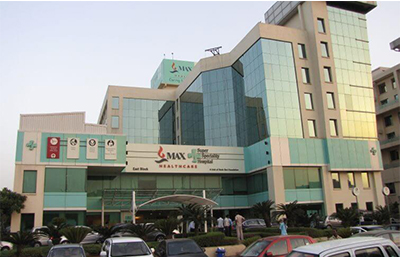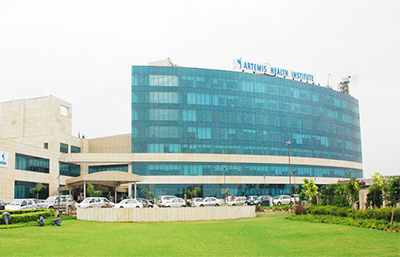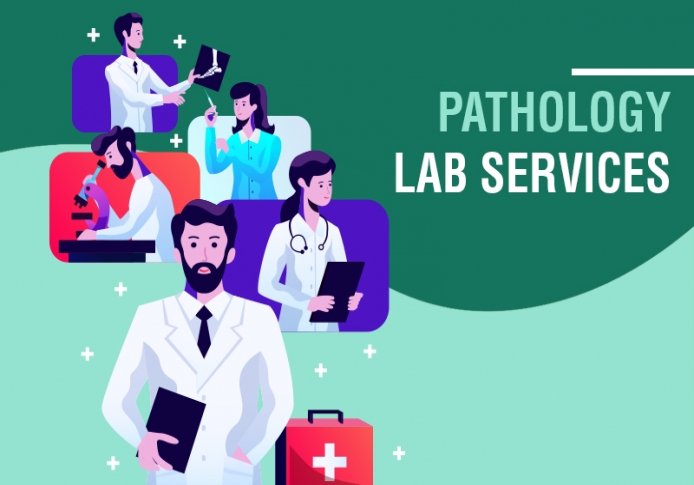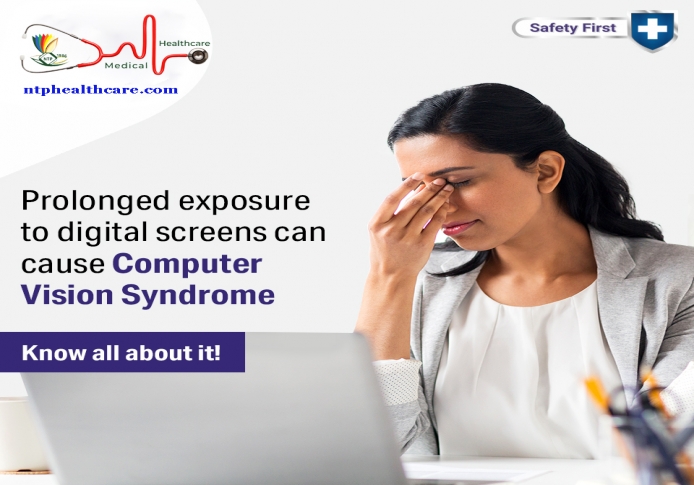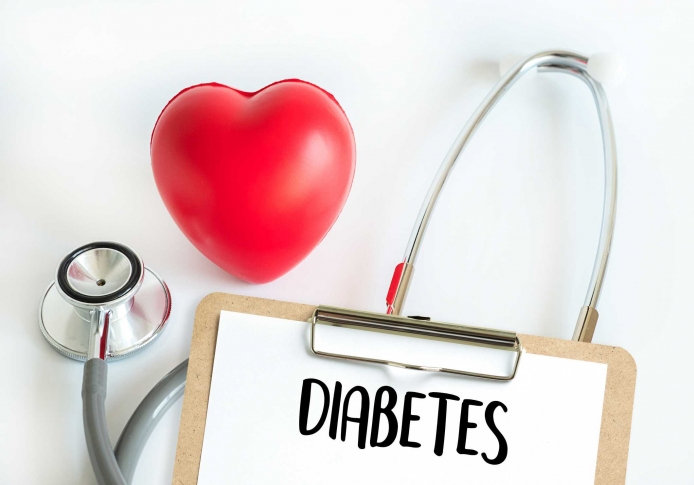Prostate Cancer
The most peculiar & common cancer in men is Prostate Cancer after skin cancer. Risk factors include age, family history, ethnicity, and diet. Diagnosis of Prostate cancer is done by digital rectal exam, prostate specific antigen (PSA) test, and prostate biopsy.
Symptoms are - incontinence, pain, blood in the urine, fatigue, frequent need to urinate, and more. Prognosis and treatment depend on cancer staging. Watchful waiting, surgery, radiation, cryotherapy, and other management strategies are available. In order to improve & find new and better treatments for prostate cancer Research and clinical trials are trying new methodologies.
The leading cause of cancer and cancer death in males is Prostate cancer; in some men, if identified early may prevent or delay metastasis and death from prostate cancer. The walnut-shaped gland is a prostate that is a part of the male reproductive system that wraps around the male urethra as it exists at the exit of the bladder. Development of Prostate cancer increases with age and is common in men above 50 years of age.
What is Prostate Cancer ?
The development of cancer cells in the prostate gland (a gland that produces fluid for semen) is Prostate cancer. This is the most common cancer in men; some cancers' growth process is slow while others are quite aggressive and spread very fast to other organs.
How Does this Prostate Cancer Develop?
The Process is the same , like all cancers, prostate cancer starts when the mass of cells has grown out of control and starts invading other tissues. Therefore, Cells become cancerous due to the gradual growth of defects, or mutations, in their DNA.
Usually, cells are able to find out and repair DNA damage, but If a cell is severely damaged and cannot repair itself, it will be so-called programmed cell death or apoptosis. Cancer occurs when damaged cells grow, divide, and spread abnormally instead of self-destructing as they should.
Symptoms of Prostate Cancer
Symptoms of prostate cancer are variable; some men have no symptoms until the cancer develops over years. However, symptoms that can develop include the following:
- Frequency in Urine
- Difficulty starting or stopping urination
- Interrupted or weak or slow urinary stream
- Blood in semen or in urine
- Discomfort (pain or burning sensation with urination or ejaculation)
- Severe pain in the low back, hips, or thighs, often present with aggressive or prostatic cancer extending to other organs
Prostate Cancer or Enlarged Prostate?
Two conditions can cause some symptoms that imitate those seen in prostate cancer as discussed above.
Benign prostatic hyperplasia (BPH)
BPH happens from the prostate growing larger in size. BPH causes symptoms by exerting pressure on the bladder, urethra, or both. BPH commonly takes place in elderly men and is a relatively benign condition in the organ.
Prostatitis (inflammation or infection of the prostate gland)
If there is prostatitis, prostate tissue becomes inflamed & there itching, this way the prostate gland swells. Even the bacteria that can cause a urinary tract infection (UTI) can also cause prostatitis, and it can also be caused by sexually transmitted diseases (STDs) including chlamydia and gonorrhoea.
Both the above conditions can be treated medically but some people with BPH may require surgical treatment.
Prostate cancer is different from the above circumstances & conditions, therefore, cancer cells can be identified in a biopsy of the prostate.
Who all are at Risk of Prostate Cancer?
Age in men (beginning at age 50) is the greatest risk factor for both BPH and prostate cancer. & eve genetics and heredity work here, having a father or brother with prostate cancer increases the chances & the risk for prostate cancer; however, African American males have the highest risk for prostate cancer. Research suggests that the large number of men at age 70 have some form of prostatic cancer and usually there are no symptoms.
Preventing Prostate Cancer
Researchers suggest a diet i.e., low in fruits and vegetables but high in meats and high-fat dairy products increases the chances for prostate cancer. The contrivance for this is being investigated, but current speculation suggests meat and high-fat foods contain compounds that lead to the growth of cancer cells.
Wether Much Sex Cause Prostate Cancer?
There are many myths about why prostate cancer develops. Till date, there is no evidence that "too much sex," masturbation, benign prostatic hyperplasia (BPH), or a vasectomy increases the risk or causes prostate cancer. However, recent studies are investigating if STDs, prostatitis, or alcohol use increase the risk of developing prostate cancer.
Screening Guidelines - Prostate Cancer
Anyways, screening tests are not done in routine for prostatic cancers, the American Cancer Society guidelines suggest some men should be screened.
Screening Guidelines Based on Age and Risk
- Men aged 40 with more than one close relative (father, brother, or son) diagnosed with prostate cancer at an early age
- Men aged 45 that are African American or have a father, brother, or son diagnosed with prostate cancer before age 65
- Men aged 50 or older who have average risk and expect to live at least 10 more years
However, there are contradictions with these guidelines; clinicians explain that treatments can have severe side effects, few of them have little or no effects on the cancer, and that some cancers have very slow growth.
Digital Rectal Exam and PSA Test
Two tests are primarily used in screening for prostate cancer.
Digital rectal exam (DRE)
A DRE is organized to determine if the prostate is enlarged and is either soft, has bumps or is very firm (hard prostate). During a digital rectal exam, a doctor detects prostate abnormalities using a gloved, lubricated finger (digit).
PSA Test
PSA test is done on a blood sample to determine the level of a protein (prostate-specific antigen or PSA) produced by prostate cells. The PSA test may indicate a person has a higher chance of having prostate cancer but different narratives exist about the test The patient and his doctor need to carefully examine the meaning and the use of these test results.
PSA Test Results
*** In general, a PSA level less than 4 nomograms per millilitre (ng/mL) of blood is considered a normal level while a PSA greater than 10 ng/mL suggests a high chance of having cancer. Unfortunately, some men have intermediate levels (5 to 9 ng/mL), making their situations more difficult to understand. To make matters complicated, some men have prostate cancer despite showing PSA levels of less than 4 ng.
PSA Test False Positives
BPH and prostatitis can increase PSA levels and lead to false positive tests.
PSA Test False Negatives
Some drugs may lower PSA levels and result in a false negative PSA test. Your doctor can help decide the meaning of both the PSA test and the digital rectal exam results and determine if additional tests need to be done.
Prostate Cancer Biopsy
If your doctor is able to diagnose that the PSA and digital rectal exam suggest prostate cancer, the physician may suggest that a biopsy of the prostate is licensed, depending on your age, medical condition, and other factors. A biopsy is done by inserting a needle through the rectum or between the rectum and scrotal junction and then removing small samples of prostatic tissue that can be examined under a microscope for cancer tissue. The biopsy may recognize and determine the aggressiveness of prostatic cancer cells.
Prostate Cancer Gleason Score
Biopsy samples from the prostate gland are conducted by a pathologist. The pathologist makes determinations based on the samples as to the severity of the cancer. This process to determine is called the Gleason score.
How the Gleason Score Is Determined ?
The pathologist gives the grade of 1 to 5 to the prostate biopsy tissue, with 5 as the worst grade of tumour pattern. Then the pathologist examines each individual cell in the tumour pattern and grades the cell types from 1 to 5 with 5 being the most aggressive cancer cell type. The Gleason score is based on the number of these two numbers (tissue grade & cell type grade). A Gleason score of 5 + 5 = 10 shows a highly aggressive prostate tumour while a low score (2 + 2 = 4) determines and shows a less aggressive cancer.
Prostate Cancer è The Stages
In terms of prostate cancer, the cancer stages are as follows:
- Stage I: The cancer is small and located within the prostate gland.
- Stage II: The cancer is more advanced, but is limited within the prostate gland.
- Stage III: The cancer has spread to the outer part of the prostate and to the area around seminal vesicles.
- Stage IV: The cancer has spread to lymph nodes, other close organs, or tissues such as the rectum or bladder, or to distant organs of the body such as the lungs or bones.
- Aggressive prostate cancer often reaches stage IV but others that are less aggressive may never progress past stage I, II, or III.
Survival Rates è Prostate Cancer
In most of the cases, prostate cancer progresses slowly through stages; about all patients diagnosed with stage I through III prostate cancer survive 5 years or more and with current treatments, the criteria is even better for future survival.
Stage 4 Prostate Cancer
Even stage IV has a 5-year survival tenure of about 35% and this figure may also increase with advancement in treatment methods.
Prostate Cancer Treatment: Watch and Wait situation exist with no substantiated guarantee
"Watch and wait," is a phrase that is being used more frequently to describe a program of active surveillance without other cancer treatment for some patients with prostate cancer. It means that if your cancer is not aggressive (based on the Gleason score and the cancer stage), treatments may be planned and your condition periodically verified. This approach is used because the risks of urinary and sexual problems inherent in most prostate cancer treatments are serious and may be put off or avoided if the cancer is not aggressive. However, aggressive prostatic cancer is usually treated even if secondary complications of treatments are harsh and in whatever stage..
Radiation Therapy :Prostate Cancer Treatment
Radiation, focused as a beam of light, can be used to kill cancer cells, specifically those cells that have migrated (metastasized) from the prostate gland. Beams of radiation can be used to minimize bone pain caused by invasive cancer cells.
Low Dose Rate Brachytherapy
Another type of radiation therapy Called as low dose rate brachytherapy; radioactive pellets with the size of a grain of rice are inserted into the prostate as a therapy.
High Dose Rate Brachytherapy
High dose rate brachytherapy applies more radioactive sources temporarily into the cancerous prostate gland.
Above two methods have side effects like erectile dysfunction, urinary tract problems, diarrhoea, and other side effects.
Prostate Cancer Surgery – Treatment of Prostate cancer
Radical prostatectomy is the surgical process that includes removal of the prostate gland. This treatment takes place when the cancer is located only in the prostate gland area. Few new surgical techniques help us to avoid damage of nerves, but the surgery would still have the side effects of erectile dysfunction and impaired urinary control. However, these side effects may gradually improve in some patients. Surgeons today have a choice of robotic technique to assist in operation and treatment.
Tips: Coping With Incontinence
Incontinence of urine is a common complication for men following prostate cancer surgery, and this problem can continue to exist even five years after the surgery takes place. In one survey of 111 men published in 2003, 69% reported after prostate surgery there is incontinence. These men used to do pelvic muscle exercises (Kegel exercises) to support the treatment. Many of them also used containment devices, including pads, special underwear, and sanitary napkins to maintain & manage the incontinence.
Post-surgical è incontinence tips:
- Maintain a Record of how much you drink, and when and how often you use the toilet. Note when you find a leak, and consider & calculate what could have caused the leak, like bending in a certain way or drinking too much coffee or soda. This record can give your doctor detailed information in order to plan for further treatment.
- Patients must practice double-voiding, that means, that after you finish urinating, wait a minute and try again.
- Try to consume less caffeine drinks and alcohol. Both of these drugs can irritate the bladder and enhance your desire to go and urinate.
- Reducing or eliminating them from your diet can help stave off the frequent need to urinate.
- Try to avoid food triggers that for some men include chocolates, artificial sweeteners, acidic, or spicy foods. Other men may feel that food plays a small role or no role at all in their incontinence problems.
- One must quit smoking , all along with all of its other many health hazards, tobacco is one of the key agent that aggravate urinary incontinence in men.
Hormone Therapy Treatment for Prostate Cancer :
Hormone therapy is Worked out to use drugs to reduce or slow the process of growth of prostate cancer cells, but it does not kill them but just marginalizes the prostate cancer cells. It is used as a medication to reduce the process of prostate cancer and to reduce the spread of aggressive prostatic cancers by creating a block/valve that reduces the production process of male hormones (androgens) like testosterone.
Hormone Therapy Side Effects
- Impotence
- Breast tissue growth
- Hot flashes
- Weight gain
Chemotherapy treatment - Prostate Cancer:
Chemotherapy is such a mechanism of treatment that is used to kill fast-growing cancer cells any part of the body so it is often carried out when aggressive cancer of prostate cells metastasize to other body sites. Usually, chemotherapy is given through a special intravenous line in a series of treatments over several months. There have been new and better lines of treatments coming up in both the hormonal and chemotherapy treatment of prostate cancer. Most important one must consider that chemotherapy often kills other fast-growing body cells like hair cells, mucosal cells, and cells that line the gastrointestinal tract. This usually results in several unwarranted side effects.
Prostate Cancer Chemotherapy Side Effects
- Hair loss
- Mouth sores
- Nausea
- Vomiting
- Other body ailments
Cryotherapy Treatment- Prostate Cancer:
Cryotherapy is a line of treatment that kills cancer cells by freezing the cells which break apart when they are rewarmed. The treatment is less painful since it is very less invasive than surgery, but the long-term effectiveness is still to be judged.
Impotence and Prostate Cancer Cryotherapy
Most important, freezing damages nerves, usually including those near the prostate that control erections. Most of the men (up to 75%) become impotent after cryotherapy. Erectile dysfunction is the most common side effect of cryotherapy than leading to radical prostatectomy.
Prostate Cancer Immunotherapy Treatment - Prostate Cancer:
Most important point is that the term prostate cancer immunotherapy has been called a vaccine, but that is actually misleading because it does not do anything that would lead to prevention of prostatic cancer from growing in men. The prostate cancer “vaccine” is a highly individualized treatment method, designed to provide immune cells derived from a single patient’s own cells. These cells are enhanced in the laboratory where the immune cells gain strength of killing or damaging the patient's own prostate cancer cells.
It is the same like hormone therapy, this "vaccine" does not kill off all the cancer cells and is currently worked out to slow the progression of aggressive cancers, specifically those unresponsive to other treatments. Research are ongoing and may be this or similar methods may be worked out to be more effective in the future with the developments.
Advanced Prostate Cancer – Hope !!
Treatment and care of diagnosed prostate cancer is most important. Whether the plan and strategy is to use the "wait, look and see" way out or either of the above-mentioned treatment approaches, prostate cancer may advance so additional tests like the PSA test or treatments may be necessary. In addition, a line of treatment can monitor how changes in the patient's lifestyle (appropriate diet and exercise, for example) can reduce the risk of pain, side effects & death from prostate cancer.
Coping With Erectile Dysfunction (ED) - Prostate Cancer:
Erectile dysfunction means -ED or failure to obtain or sustain an erection is the most common side effect of most prostate cancer treatments. In some cases, especially those men who are under 70 years, improved erectile function may take place after 2 years of surgery. All along, the patient must ensure from various ED medications and therapies, including several medicated devices for men with ED. Men with ED can discuss the various options with their physician and partner to plan for the ideal individual treatment method(s) & results.
Conscious Diet - Cancer
Most important, a good diet and good living habits i.e., lifestyle may help to reduce the risk for prostate cancer. The same may be followed for those who are diagnosed with the prostate cancer in order to reduce side effects & cancer recurrence. Hence, it is essential to monitor the diet and lifestyle pattern.
Tips of Diet to Avoid Recurrence of Prostate Cancer
- Ensure to add in meals a good amount of fruits and vegetables.
- Plan for the whole grains and reduce the consumption of processed grains and white flour. A combination of fruits and vegetables, whole grains add fibre to the diet. Hence, more fibre may slow the process of risk in prostate cancer.
- Stop or reduce the High Dairy products and meats, especially processed meats like sausage, bacon, and baloney. The World Health Organization(2015) declared that diets consisting of red meat increase the risk of prostate cancer. Hence eating a lot of high-fat dairy products increases the chances and risk of prostate cancer.
· There are claims in research that orange juice, spinach, and other foods may reduce the risk of cancer; prostate cancer. Hence good diet and correction in Lifestyle with regular doctor treatment help in handling prostate cancer.
· Be Cautious with the Supplements- Prostate Cancer:
Prostate cancer and any other cancer patients should be very careful while taking supplements and other items that are called as cancer prevention or cures. Before consuming any such supplement the patient must consent with their doctor. Above all cancer patients are guided not to self-medicate or mend medication dosages without discussing with their physicians.


